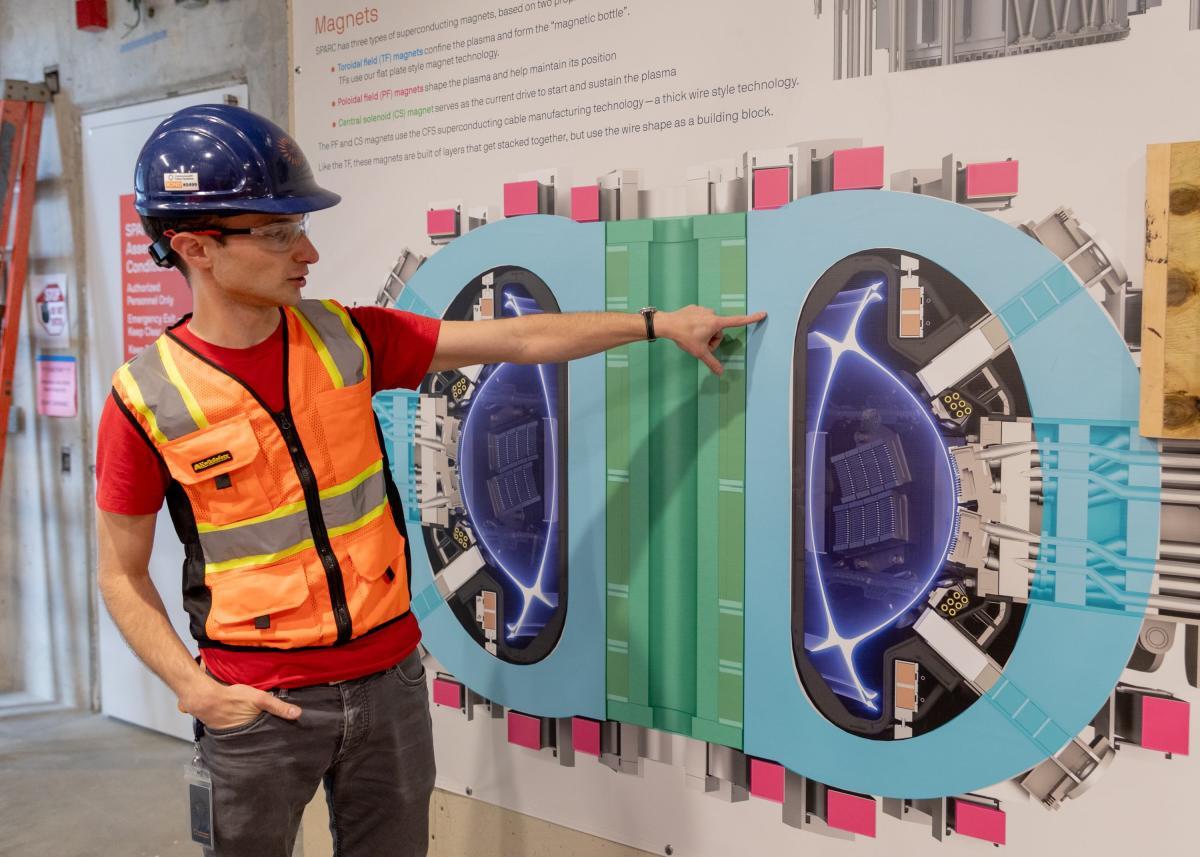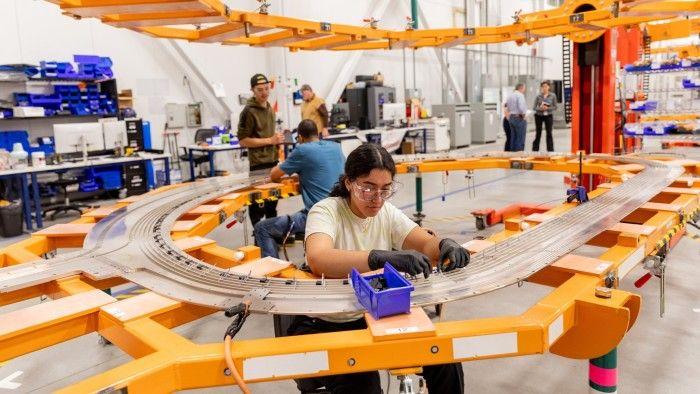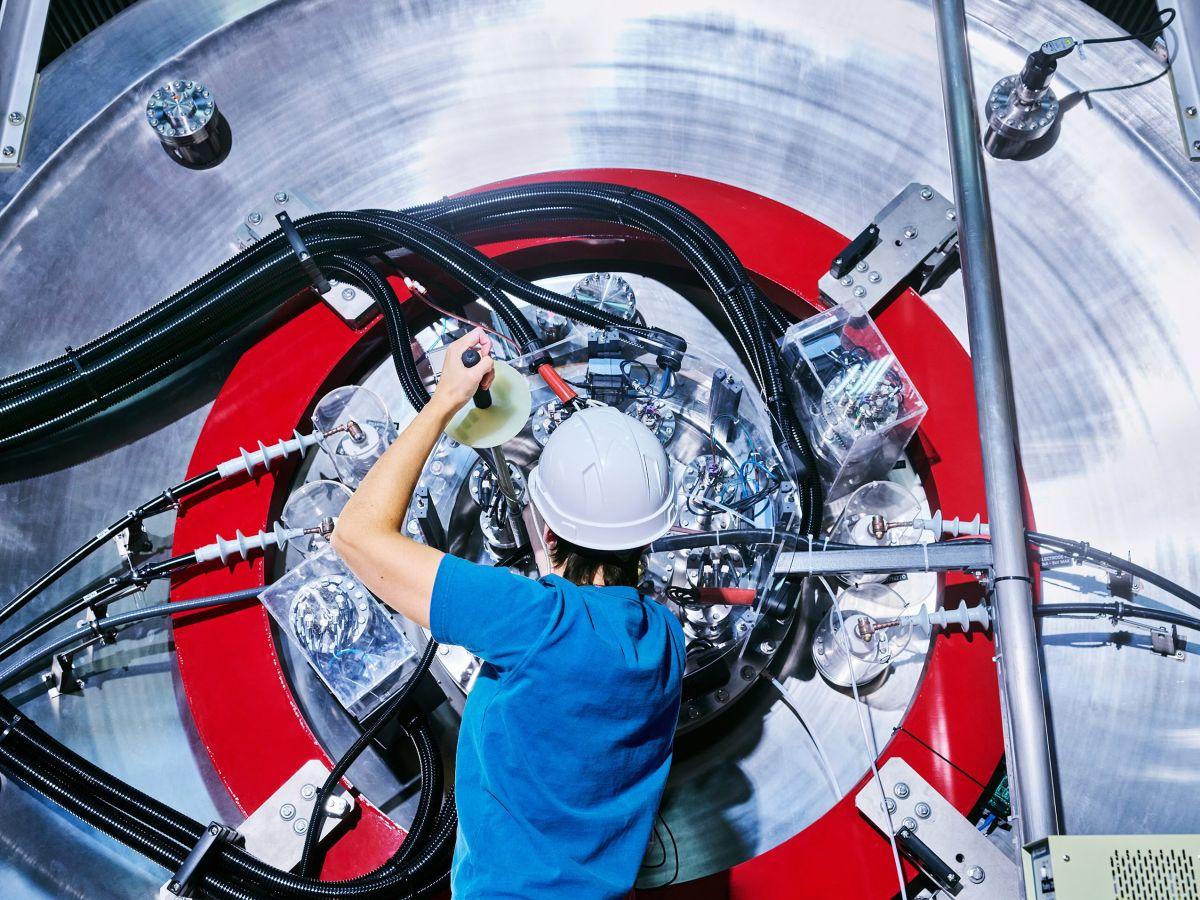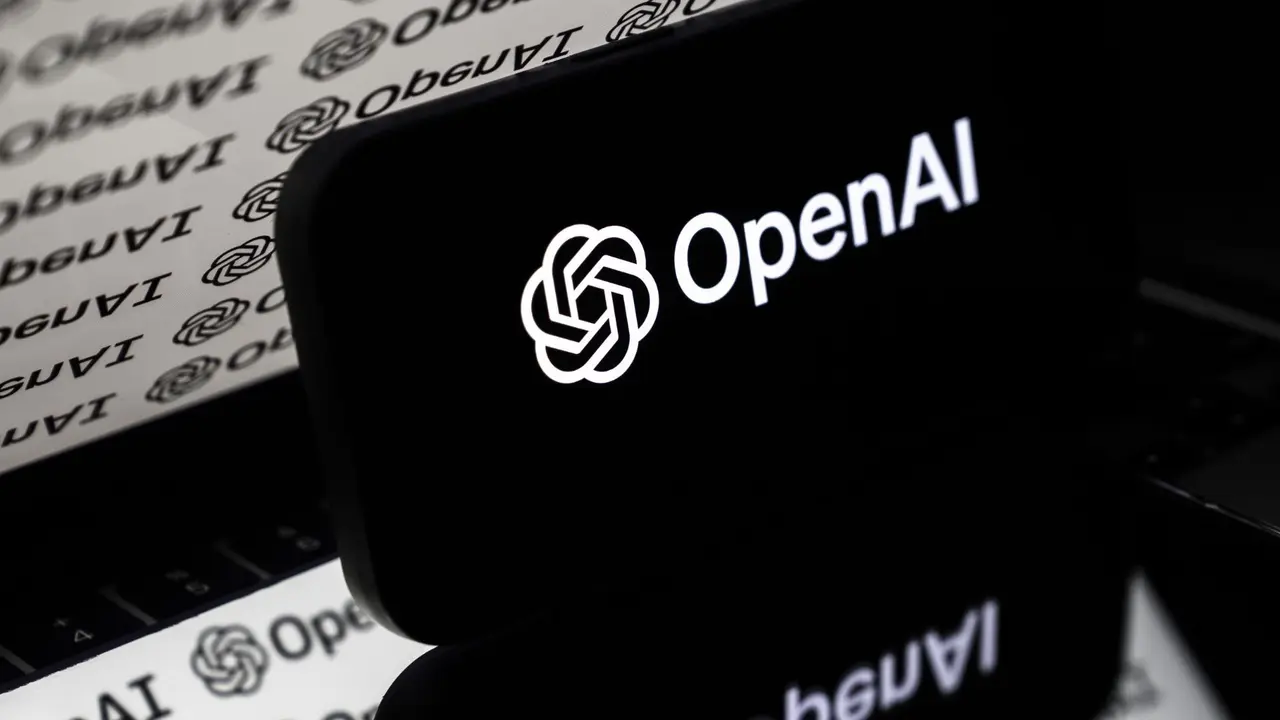Google DeepMind Partners with CFS to Accelerate Fusion Energy Development Using AI
5 Sources
5 Sources
[1]
The real reason Google DeepMind is working with a fusion energy startup | TechCrunch
Energy startup Commonwealth Fusion Systems said Thursday it's working with Google's DeepMind division to fine tune -- and even improve -- the operation of its forthcoming Sparc reactor using AI. The companies plan will simulate the plasma that will burn inside CFS's reactor using specialized DeepMind software known as Torax. They also plan on pairing Torax with AI models to help CFS figure out how best to achieve fusion power. Fusion power promises to deliver massive amounts of electricity with zero emissions from a near limitless source of fuel: water. AI-related companies have been bullish on fusion startups as a source of electricity to power energy-hungry data centers. Google appears to be eyeing them as potential customer as well. This isn't Google's first foray into nuclear fusion. The tech company has worked with another fusion startup, TAE Technologies, to use AI to study how plasma behaves inside TAE's fusion machine. There's a reason Google keeps coming back to the problem: AI might be uniquely suited to making fusion power possible. One of the biggest challenges facing fusion startups is keeping the plasma inside a reactor hot enough for long enough. Unlike nuclear fission reactions, which are self-sustaining, fusion reactions are difficult to maintain outside of stars like the Sun. Without that sort of mass and gravity, the plasma is constantly in danger of diffusing and snuffing itself out. In CFS's reactors, powerful magnets substitute for gravity to help corral the plasma, but they're not perfect. Reactor operators have to develop control software that can enable the device to continuously react to changing plasma conditions. Problem is, there are almost too many knobs to turn, certainly more than a human is capable of. That's the sort of problem that AI excels at. Experts have cited AI as one of the key technologies that has enabled the industry's remarkable advances over the past several years. CFS is currently building Sparc, its demonstration reactor, in a suburb outside Boston. The device is about two-thirds completed, and when finished later in 2026, the startup is predicting that it will be the first fusion device capable of producing more power than the plant needs to run itself. Google said Torax can be used with reinforcement learning or evolutionary search models to find the "most efficient and robust paths to generating net energy." The two companies are also exploring whether AI can be used to control the reactor's operation. In August, Google participated in CFS's $863 million Series B2 round alongside Nvidia. Earlier this year, Google also said it would buy 200 megawatts of electricity from CFS's first commercial power plant, Arc, which is planned to be built outside Richmond, Virginia. The tech company is also an investor in CFS competitor TAE Technologies.
[2]
US firm advances with Google to fine tune nuclear fusion reactor plasma
The plan uses DeepMind's open-source Torax software to model the plasma inside the SPARC reactor. US-based nuclear fusion firm Commonwealth Fusion Systems (CFS) has collaborated with Google's DeepMind division to use artificial intelligence to fine-tune and enhance the operation of its forthcoming SPARC fusion reactor. The partnership aims to accelerate the path to commercial fusion energy by using AI to simulate and improve control of the superhot plasma that will fuel the machine. The plan involves using DeepMind's specialized, open-source software known as Torax to model the plasma inside the SPARC reactor, which is located at CFS headquarters in Devens, Massachusetts.
[3]
Google DeepMind partners with fusion startup
What they're saying: "Everyone talks about how much energy AI is going to use, but AI can actually help the energy equation on the supply side too," Commonwealth Fusion Systems (CFS) CEO Bob Mumgaard told Axios. Driving the news: As part of the deal, CFS will use Google's open-source software to simulate the physics of plasma -- the particles that reach 100 million° C to form fusion's fuel -- as researchers attempt to figure out the most efficient systems. * CFS plans to use the software, known as TORAX, to help optimize its SPARC fusion reactor before it's fully turned on in late 2026 or early 2027. * The companies will also test how Google DeepMind's software could help with the operation of SPARC and future fusion energy systems. That effort builds on preliminary work Google conducted at a facility in Switzerland. * The partnership formalizes joint work that began four years ago and is the latest in a series of deals between the two companies. * Google said earlier this year it will buy 200 megawatts of energy from CFS, and parent company Alphabet is already an investor. The move comes after Energy Secretary Chris Wright announced a roadmap for the agency's fusion efforts. Yes, but: Even those developing the technology say commercial availability of fusion-derived energy is still years off.
[4]
Google DeepMind is bringing AI to the next generation of fusion energy
We're partnering with Commonwealth Fusion Systems (CFS) to bring clean, safe, limitless fusion energy closer to reality. Fusion, the process that powers the sun, promises clean, abundant energy without long-lived radioactive waste. Making it work here on Earth means keeping an ionized gas, known as plasma, stable at temperatures over 100 million degrees Celsius -- all within a fusion energy machine's limits. This is a highly complex physics problem that we're working to solve with artificial intelligence (AI). Today, we're announcing our research partnership with Commonwealth Fusion Systems (CFS), a global leader in fusion energy. CFS is pioneering a faster path to clean, safe and effectively limitless fusion energy with its compact, powerful tokamak machine called SPARC. SPARC leverages powerful high-temperature superconducting magnets and aims to be the first magnetic fusion machine in history to generate net fusion energy -- more power from fusion than it takes to sustain it. That landmark achievement is known as crossing "breakeven," and a critical milestone on the path to viable fusion energy. This partnership builds on our groundbreaking work using AI to successfully control a plasma. With academic partners at the Swiss Plasma Center at EPFL (École Polytechnique Fédérale de Lausanne), we showed that deep reinforcement learning can control the magnets of a tokamak to stabilize complex plasma shapes. To cover a wider range of physics, we developed TORAX, a fast and differentiable plasma simulator written in JAX. Now, we're bringing that work to CFS to accelerate the timeline to deliver fusion energy to the grid. We've been collaborating on three key areas so far: The combination of our AI expertise with CFS's cutting-edge hardware makes this the ideal partnership to advance foundational discoveries in fusion energy for the benefit of the worldwide research community, and ultimately, the whole world. To optimize the performance of a tokamak, we need to simulate how heat, electric current and matter flow through the core of a plasma and interact with the systems around it. Last year, we released TORAX, an open-source plasma simulator built for optimization and control, expanding the scope of physics questions we could address beyond magnetic simulation. TORAX is built in JAX, so it can run easily on both CPUs and GPUs and can smoothly integrate AI-powered models, including our own, to achieve even better performance. TORAX will help CFS teams test and refine their operating plans by running millions of virtual experiments before SPARC is even turned on. It also gives them flexibility to quickly adapt their plans once the first data arrives. This software has become a linchpin in CFS's daily workflows, helping them understand how the plasma will behave under different conditions, saving precious time and resources.
[5]
Google's DeepMind and CFS are building an AI plasma control system for nuclear fusion - SiliconANGLE
Google's DeepMind and CFS are building an AI plasma control system for nuclear fusion Google LLC's DeepMind research unit is partnering with the nuclear fusion startup Commonwealth Fusion Systems LLC to see if it can help it generate almost unlimited amounts of clean energy using its most advanced artificial intelligence models. DeepMind will help the energy startup to manage, and perhaps even improve, the way its soon-to-be-launched Sparc reactor, which is key to generating fusion-based power. In a blog post, DeepMind's "Fusion Team" explained that it'll be using its models to try and simulate the plasma that will burn inside the Sparc reactor, so that they can work out how to control it properly. It has created a specialized software program to do this, called Torax, and that software will also be used in concert with other AI models to figure out the best way to enable fusion. It's a noble goal, because nuclear fusion has for years been the Holy Grail of clean energy. It can potentially provide humans with an almost unlimited source of power with absolutely zero carbon emissions, because its main fuel is water. So it makes sense for Google to want to support anyone who can crack the challenge of getting nuclear fusion to work, given the incredible energy requirements of its AI data centers. And if Google can also help CFS become a customer, all the better. DeepMind's fusion team explained that AI can potentially be extremely helpful to nuclear fusion startups, and they should probably know, considering that Google has also been working with another company called TAE Technologies Inc. for the best part of a decade to study the properties of plasma. The challenge that CFS faces is that it's a bit of a struggle to keep the plasma inside its fusion reactor at a hot enough temperature to start generating energy. It has to be kept at extremely high temperatures for long durations, and that isn't an easy thing to do. Whereas nuclear fission reactions are self-sustaining once they're started, fusion reactions only keep going like this when they're taking place inside a star. The star provides the required gravity and mass to sustain the fusion almost indefinitely, but without that kind of heft, the plasma tends to diffuse and the reactions fizzle out. With its Sparc reactor, CFS intends to use powerful magnets instead of a star's gravity to try and steady the plasma and keep its fusion reaction ticking over to generate a constant stream of energy. However, these magnets need to perform an incredibly delicate balancing act, and that requires the development of specialized control software that's able to monitor the plasma and adjust the magnets in reaction to its constantly-changing state. The challenge is that CFS needs to make millions of minute adjustments each second, and so no human has the capacity to keep up with such demands. But AI might be able to step in and do it. Already, AI has helped the nuclear fusion industry to make significant advances in the last few years, and DeepMind thinks it's well suited to the problem of plasma control too. CFS has said that the Sparc reactor will be finished sometime next year. Once it's up and running, the company believes it will be the first fusion device in the world that's able to generate more energy than its own power requirements. In other words, it's hoped it will be the first fusion reactor that can squeeze out a surplus of energy, and if so, prove that fusion-based power is an achievable goal. According to DeepMind, the plan is to combine Torax with reinforcement learning and evolutionary search models to try and discover the most efficient and sustainable way to generate an energy surplus. They'll also work on devising AI systems that can control the reactor itself. Google has a vested interest in seeing CFS succeed, and not only because it can potentially obtain a huge source of incredibly cheap energy. It's also one of the startup's biggest financial backers, having participated in its $863 million Series B2 funding round in August, together with Nvidia Corp.
Share
Share
Copy Link
Google's DeepMind division is collaborating with Commonwealth Fusion Systems (CFS) to optimize the operation of fusion reactors using artificial intelligence. This partnership aims to bring clean, limitless fusion energy closer to reality by leveraging AI to simulate and control plasma behavior.

Google DeepMind and CFS Collaborate on Fusion Energy
Google's DeepMind division has announced a groundbreaking partnership with Commonwealth Fusion Systems (CFS) to accelerate the development of fusion energy using artificial intelligence (AI)
1
. This collaboration aims to fine-tune and enhance the operation of CFS's forthcoming SPARC fusion reactor, potentially bringing clean, limitless fusion energy closer to reality4
.The Role of AI in Fusion Energy
The partnership leverages DeepMind's specialized open-source software, TORAX, to simulate and model the plasma behavior inside the SPARC reactor
2
. TORAX, built using JAX, can run on both CPUs and GPUs, allowing for seamless integration with AI-powered models4
. This technology enables CFS to run millions of virtual experiments before SPARC is even operational, saving precious time and resources.Challenges in Fusion Energy
One of the biggest challenges in fusion energy is maintaining plasma at temperatures exceeding 100 million degrees Celsius for extended periods
4
. Unlike nuclear fission, fusion reactions are difficult to sustain outside of stars. CFS's approach uses powerful magnets to contain the plasma, but controlling these magnets requires complex software capable of making millions of minute adjustments per second5
.The SPARC Reactor and Net Energy Production
CFS is currently building the SPARC reactor, which is about two-thirds completed and expected to be operational by late 2026 or early 2027
1
3
. The company predicts that SPARC will be the first fusion device capable of producing more power than it consumes, a milestone known as "breakeven"4
.Related Stories
Google's Investment in Fusion Energy
This partnership is not Google's first foray into fusion energy. The tech giant has previously worked with another fusion startup, TAE Technologies, and is an investor in both CFS and TAE
1
. Google's interest in fusion energy is twofold: as a potential customer for clean energy to power its data centers and as an investor in promising fusion startups5
.Future Implications
While the partnership between Google DeepMind and CFS shows promise, experts caution that commercial availability of fusion-derived energy is still years away
3
. However, the application of AI to fusion energy research represents a significant step forward in addressing global energy challenges and potentially providing a clean, safe, and virtually limitless source of power for the future.References
Summarized by
Navi
[2]
Related Stories
Google Inks Landmark Deal for Fusion Power with Commonwealth Fusion Systems
01 Jul 2025•Business and Economy

AI Breakthrough Accelerates Fusion Reactor Safety Calculations
14 Aug 2025•Science and Research

Commonwealth Fusion Systems Secures $863M in Funding to Advance Nuclear Fusion Technology
29 Aug 2025•Business and Economy

Recent Highlights
1
AI Chatbots Sway Voters More Effectively Than Traditional Political Ads, New Studies Reveal
Science and Research

2
Google AI glasses set to launch in 2026 with Gemini and Android XR across multiple partners
Technology

3
EU Launches Antitrust Probe Into Google's AI Training Practices and Content Usage
Policy and Regulation




